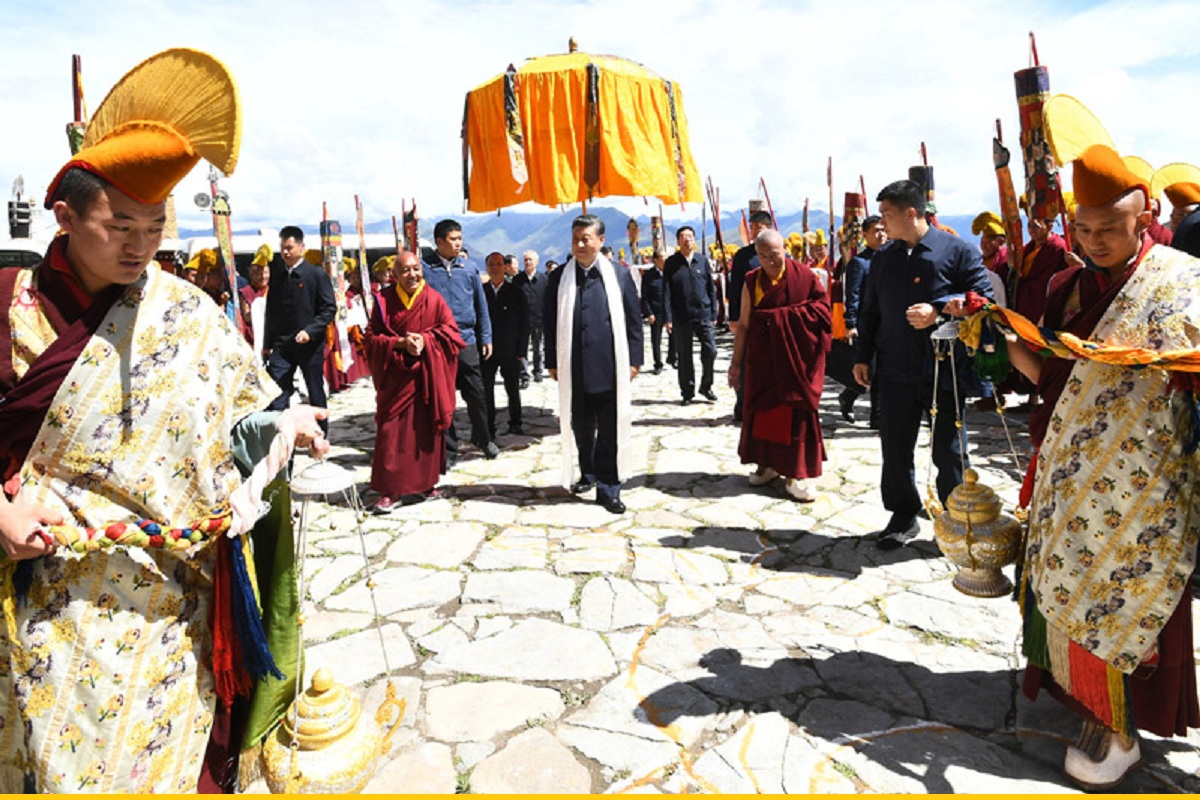Still unexplained
The hunt for the origins of Covid-19 has for the past four years been a tangled web of politics, power struggles, and international finger-pointing.
In footage released by state broadcaster CCTV, Mr Xi was seen leaving his plane and greeting a crowd wearing ethnic costumes and waving the Chinese flag.

(Image: Twitter/@BarkhorLhasa)
China’s response on Thursday to the 70th anniversary of its taking over control of Tibet was not wholly unexpected. Specifically, it has buttressed the message to accept the rule of the omnipotent Communist Party of China. Yet the articulation has been remarkable. Beijing has ruled the remote western region since 1951, after its People’s Liberation Army marched in and took control in what it calls a “peaceful liberation”.
“Tibet can only develop and prosper under the party’s leadership and socialism,” Wang Yang, who heads a national organisation responsible for uniting all races and all parties under the leadership of the Communist Party, said at the event in the region’s capital, Lhasa.
The celebration, attended by almost 10,000 people, was held at the foot of the iconic Potala Palace, a sacred Buddhist site associated with the Dalai Lamas. A nationwide live telecast of the celebratory grandstanding prominently featured a four-storey high portrait of Chinese President Xi Jinping towering over the audience.
Advertisement
Propagandists in the 1950s and 1960s used to extensively display Mao Zedong’s portraits at rallies and celebrations to whip up a personality cult around him and cultivate loyalty. Most leaders after Mao forbade the practice, although under Xi’s rule, his solo portraits as well as those with him and four previous leaders have been placed extensively in Tibet.
The party’s atheist Han leaders in Beijing have also made additional efforts to cultivate loyalty among Tibetans, many of whom are devout Buddhists and traditionally view the Dalai Lamas as their spiritual leaders. The call to abide by the certitudes of the CPC intrinsically signifies China’s geostrategy.
President Xi urgently needs to strengthen his position given the general flux in international relations, most recently in Afghanistan. Beijing has branded the current Dalai Lama, exiled in India, as a dangerous separatist and has instead recognised the current Panchen Lama, put in place by the party, as the highest religious figure in Tibet.
Tibet is a long way from Dharamsala and not merely in terms of distance. Judging by the critical yardstick of what they call periodisation of history, President Xi’s recent visit to Tibet is decidedly historic not the least because it is the first Chinese presidential visit to the politically troubled region in 30 years.
Mr Xi last visited the region 10 years ago as Vice-President, and the last sitting Chinese leader to officially visit Tibet was Jiang Zemin in 1990. Unmistakable was the shroud of secrecy in 2021 over an unannounced visit; the state media reported the event after it ended. China has been accused of suppressing cultural and religious freedom in the remote and predominantly Buddhist region. The government, not always convincingly, denies the accusations and says Tibet has developed considerably under its rule.
In footage released by state broadcaster CCTV, Mr Xi was seen leaving his plane and greeting a crowd wearing ethnic costumes and waving the Chinese flag. There has been a bout of protests, including self-immolations, making the topic of Tibet per se very sensitive to Beijing.
Advertisement